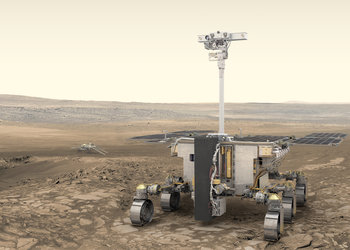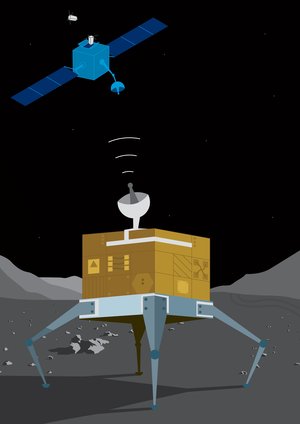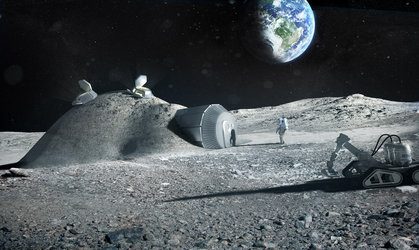Oxygen and metal powder extracted from moonrocks
British engineers who are perfecting a technique for transforming moondust into oxygen have made a breakthrough that could shape the future of space exploration.
Using specially designed pilot reactors, UK firm Metalysis has successfully extracted air from simulated moonrock, leaving behind kilos of powdered metal that could one day be used to build lunar habitats.
This is the first time the by-product has been produced in these quantities.
The demonstration could pave the way for an extra-terrestrial extraction plant for oxygen and manufacturing materials that would enable lunar exploration while avoiding the enormous cost of sending supplies from Earth.
The technology could even be used to develop a spacecraft refuelling station on the Moon.
Metalysis has already developed a mineral extraction process, which is currently used by industries on Earth to produce metals.
For the past year the company has been working with ESA to explore how this process could be used in a lunar setting, a project which forms part of wider agency preparations to support the establishment of a permanent and sustainable presence on Earth’s natural satellite.
Lunar regolith contains about 45% oxygen which is bound to metals such as iron and titanium.
Metalysis’ electrochemical process takes place in a chamber the size of a washing machine. Simulant regolith is submerged in a molten salt and a current is then passed through it. This triggers the extraction of the oxygen, which then migrates across the liquid salt to collect at an electrode, leaving behind a mixture of metal powders.
These powders could be 3D-printed, cast or processed into materials to construct equipment or infrastructure.
As part of the project, Metalysis has been working to improve the efficiency of its extraction process.
Energy is already at a premium on the Moon, so this could open up numerous opportunities for in-situ resource utilisation and advanced manufacturing.
In parallel, ESA and Metalysis have challenged experts to develop an in-process monitoring system that could be used to keep track of oxygen production in future lunar extraction plants.
Ian Mellor, Managing Director at Metalysis said: “We are excited to be at the forefront of this in-situ resource utilisation activity, demonstrating that multiple kilogram batches of metal alloy powder can be produced from moon rock, using the Metalysis technology. This enables new design opportunities in the construction of lunar habitats, which until now could only be envisaged conceptionally.”
The project is supported by ESA and the UK Space Agency.
Advenit Makaya, ESA Advanced Manufacturing Engineer and technical officer for the project, said: “The work performed in this activity gives us very valuable insight into how the Metalysis process could help to support our objective of using the most abundant resource on the Moon and Mars, the regolith. This could provide the oxygen and manufacturing materials needed to ensure future sustainable activities on their surfaces.”
Sue Horne, Head of Space Exploration at the UK Space Agency, said: “The UK is playing a leading role in space exploration, including the Rosalind Franklin rover which launches next year to search for signs of life on Mars.
“Finding ways to create the things we need to support life – food, water and breathable air – will be essential for longer-term crewed missions into deep space. This exciting research from Metalysis brings us a step closer to making that possible.”















 Germany
Germany
 Austria
Austria
 Belgium
Belgium
 Denmark
Denmark
 Spain
Spain
 Estonia
Estonia
 Finland
Finland
 France
France
 Greece
Greece
 Hungary
Hungary
 Ireland
Ireland
 Italy
Italy
 Luxembourg
Luxembourg
 Norway
Norway
 The Netherlands
The Netherlands
 Poland
Poland
 Portugal
Portugal
 Czechia
Czechia
 Romania
Romania
 United Kingdom
United Kingdom
 Slovenia
Slovenia
 Sweden
Sweden
 Switzerland
Switzerland































